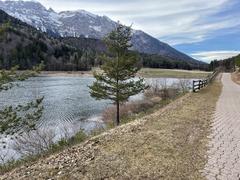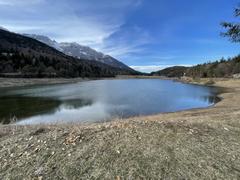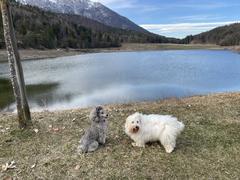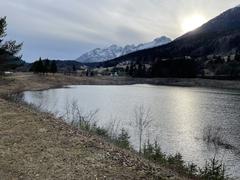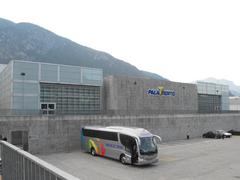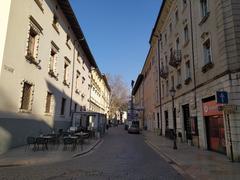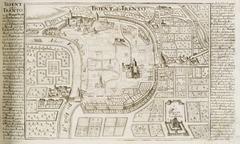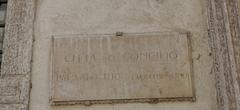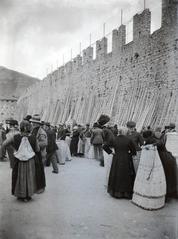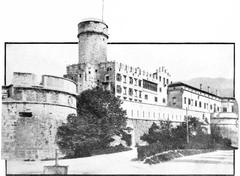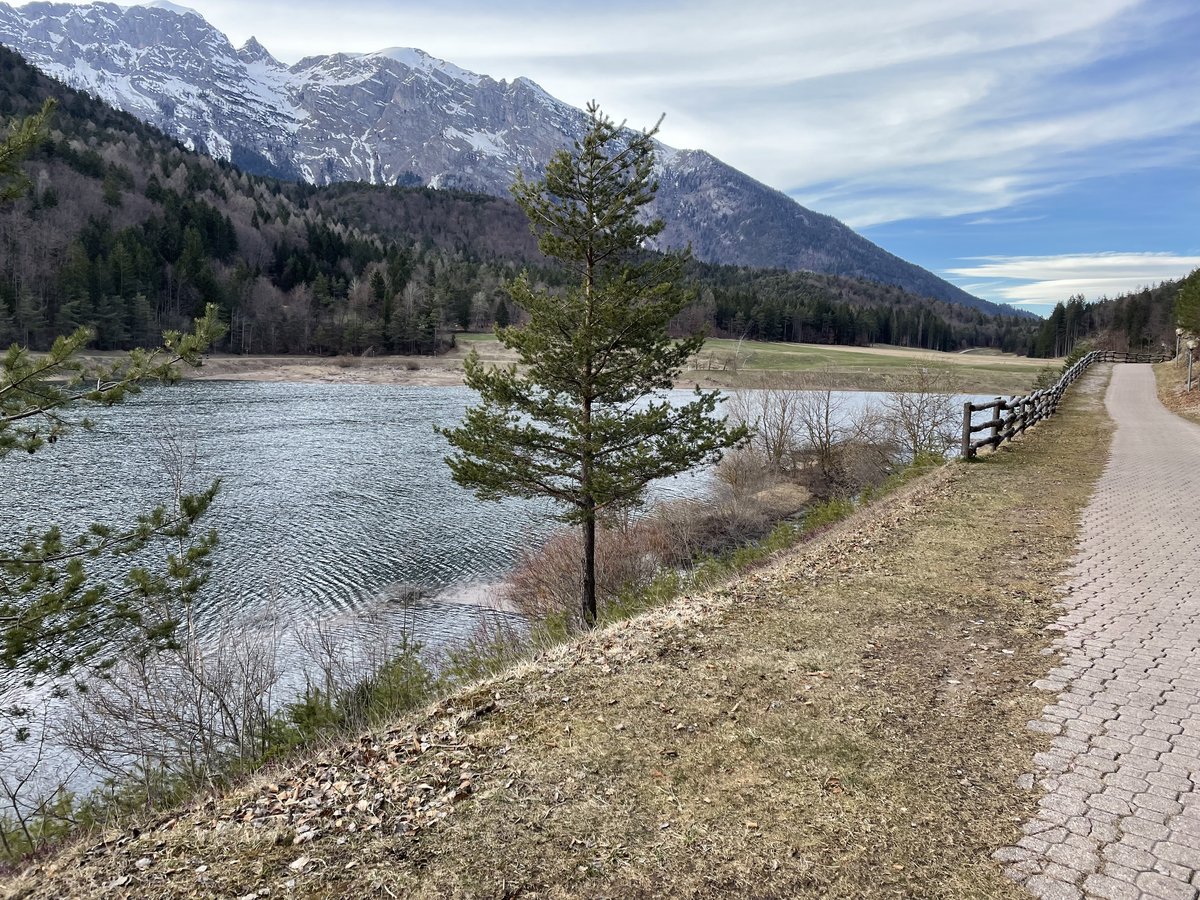
Comprehensive Guide to Visiting Lago di Andalo, Trento, Italy
Date: 25/07/2024
Introduction
Nestled in the picturesque province of Trento, Italy, Lago di Andalo is a natural marvel that captivates visitors with its unique hydrological characteristics and stunning scenic beauty. This periodic lake, situated at an elevation of 998 meters above sea level, fills and drains in response to seasonal changes, creating a dynamic landscape that varies dramatically throughout the year. Typically expanding to cover up to 50 hectares with a depth of around 13 meters from early April to mid-June, the lake often disappears entirely during the summer months, only to reappear with the autumn rains (Wikipedia). The lake’s distinctive behavior is influenced by its geological setting in a limestone basin filled with pebbles and sand and fed by underground karst springs. This unique natural phenomenon has intrigued scientists and nature enthusiasts for centuries, making it a subject of significant geological and hydrological studies.
Beyond its scientific interest, Lago di Andalo holds a rich historical and cultural significance for the local community. The area has been inhabited since prehistoric times, and the lake’s mysterious periodicity has been woven into local folklore and legends. Today, it remains a popular destination for outdoor activities, from hiking and cycling to fishing and cross-country skiing, drawing visitors who seek both recreation and a deep connection with nature (Trentino.com). This guide aims to provide comprehensive information on visiting Lago di Andalo, including its history, significance, visitor tips, and conservation efforts, ensuring that every traveler can fully appreciate and enjoy this extraordinary natural site.
Table of Contents
History and Significance
Geological and Hydrological Characteristics
Lago di Andalo is a unique natural phenomenon located in the province of Trento, Italy. It is the only periodic lake in the region, situated at an elevation of 998 meters above sea level. The lake’s periodic nature is due to its hydrological characteristics, which are influenced by seasonal changes. Typically, the lake fills up from early April to mid-June, reaching its peak size of up to 50 hectares and a maximum depth of around 13 meters. After this period, the water level rapidly decreases, often disappearing entirely during the summer months, only to reappear with the autumn rains (Wikipedia).
The lake is situated in a limestone basin filled with pebbles and sand, which contributes to its unique hydrological behavior. It is fed by underground karst springs, and the infiltration water feeds the Rio Lambin, which has its source to the south of the lake. During particularly rainy years, excess water is channeled through an artificial canal into the Rio Lavezol to prevent flooding (Wikipedia).
Historical Context
The history of Lago di Andalo is closely tied to the geological and hydrological characteristics of the region. The lake’s periodic nature has been a subject of interest for centuries, attracting naturalists and geologists who have studied its unique behavior. The area around the lake has been inhabited for millennia, with evidence of human activity dating back to prehistoric times. The lake and its surroundings have been used for various purposes, including agriculture, fishing, and recreation.
In the past, the lake’s periodic nature was a source of mystery and fascination for the local population. The sudden appearance and disappearance of the lake were often attributed to supernatural forces. However, with the advancement of scientific knowledge, the hydrological processes governing the lake’s behavior have been better understood.
Cultural Significance
Lago di Andalo holds significant cultural importance for the local community. The lake and its surroundings are a popular destination for outdoor activities, including hiking, cycling, and fishing. The area is also known for its rich biodiversity, with various species of flora and fauna inhabiting the region. The lake’s unique hydrological behavior has made it a symbol of the natural beauty and ecological diversity of the Trentino region.
The local community has developed various traditions and festivals centered around the lake. These events celebrate the natural beauty of the area and promote environmental conservation. The lake is also a popular subject in local folklore and legends, adding to its cultural significance.
Environmental Importance
Lago di Andalo is an important ecological site, providing habitat for various species of plants and animals. The lake’s periodic nature creates a dynamic environment that supports a diverse range of species. The only fish species found in the lake is the sanguinerola, which is adapted to the unique hydrological conditions of the lake (Wikipedia).
The surrounding area is characterized by a mix of forested and open landscapes, providing habitat for various terrestrial species. The lake and its surroundings are part of a larger network of protected areas in the Trentino region, aimed at preserving the region’s natural heritage.
Visitor Information
Visiting Hours and Tickets
Lago di Andalo is accessible to visitors year-round, but the best time to visit is from early April to mid-June when the lake is at its fullest. There are no specific visiting hours as the lake is a natural site; however, it is recommended to visit during daylight hours to fully appreciate its beauty. There is no admission fee to visit Lago di Andalo.
Travel Tips and Accessibility
Reaching Lago di Andalo from Trento is relatively straightforward. Visitors can take a bus or drive to the village of Andalo, which is well-connected by public transportation. From Andalo, the lake is easily accessible by foot or bicycle. The area around the lake offers well-maintained paths suitable for all fitness levels, making it accessible for families and individuals with mobility concerns.
Nearby Attractions and Activities
While visiting Lago di Andalo, tourists can explore several nearby attractions. The village of Andalo offers a variety of recreational activities, including a sports center with facilities for soccer, mini golf, climbing, basketball, and more. In winter, the hiking paths around the lake are transformed into enchanting cross-country ski runs, illuminated even at night (Trentino.com).
The Paganella and Brenta Dolomites provide a stunning backdrop for outdoor activities such as hiking, cycling, and skiing. Additionally, visitors can explore other historical sites in Trento, enhancing their cultural experience in the region.
Conservation Efforts
Given its ecological and cultural significance, Lago di Andalo is the focus of various conservation efforts aimed at preserving its unique natural heritage. These efforts include monitoring the lake’s hydrological behavior, protecting the surrounding habitats, and promoting sustainable tourism practices.
Local authorities and environmental organizations work together to ensure that the lake and its surroundings are managed in a way that balances conservation with recreational use. Public awareness campaigns and educational programs are also conducted to promote environmental stewardship among visitors and the local community.
FAQ
What is the best time to visit Lago di Andalo?
The best time to visit Lago di Andalo is from early April to mid-June when the lake is at its fullest.
Are there guided tours available at Lago di Andalo?
There are no formal guided tours, but local guides are available for hire, offering personalized tours of the area.
How can I reach Lago di Andalo from Trento?
Visitors can take a bus or drive to the village of Andalo. From there, the lake is easily accessible by foot or bicycle.
What are some nearby historical sites in Trento?
Some nearby historical sites include Buonconsiglio Castle, the Trento Cathedral, and the Museum of Science (MUSE).
Conclusion
Lago di Andalo stands out as a remarkable natural phenomenon with a rich tapestry of historical, cultural, and environmental significance. Its periodic nature not only creates a dynamic and ever-changing landscape but also supports a unique ecosystem that thrives in its fluctuating conditions. Visitors to Lago di Andalo can immerse themselves in a variety of outdoor activities, from hiking and cycling to enjoying winter sports, all while being surrounded by the stunning backdrop of the Paganella and Brenta Dolomites (VisitTrentino.info). The local community’s dedication to preserving this natural heritage through various conservation efforts ensures that Lago di Andalo remains a pristine and cherished destination for future generations.
Whether you’re drawn by the lake’s fascinating geological characteristics, its rich biodiversity, or the outdoor recreational opportunities it offers, Lago di Andalo promises an unforgettable experience. As you plan your visit, consider the best times to witness the lake in its full glory, typically from early April to mid-June, and take advantage of the well-maintained paths and facilities that make it accessible for all visitors. By respecting the environment and participating in sustainable tourism practices, you can contribute to the ongoing preservation of this unique natural wonder. For more travel tips, updates, and to stay connected with the latest information, download the Audiala mobile app and follow us on social media.
References
- Wikipedia. (n.d.). Lago di Andalo. Retrieved from Wikipedia
- Trentino.com. (n.d.). Andalo. Retrieved from Trentino.com
- VisitTrentino.info. (n.d.). Lake Andalo. Retrieved from VisitTrentino.info
